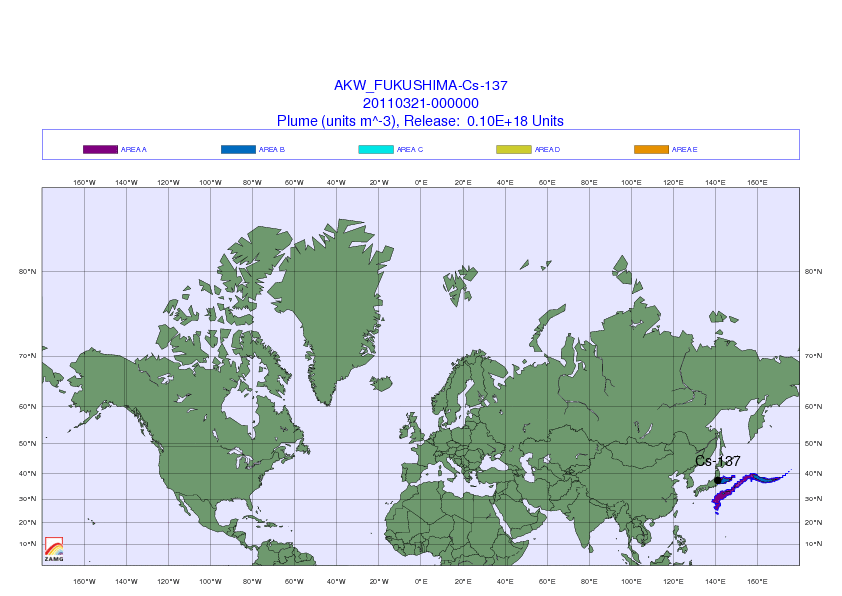As I've previously noted, many experts say that the Fukushima plants will keep on leaking for months. See this and this.
And the amount of radioactive fuel at Fukushima dwarfs Chernobyl.
As the New York Times notes, radioactive cesium is the main danger from the Japanese nuclear accident:
So it is bad news indeed that, as reported by New Scientist, cesium fallout from Fukushima already rivals Chernobyl:
Over the long term, the big threat to human health is cesium-137, which has a half-life of 30 years.
At that rate of disintegration, John Emsley wrote in “Nature’s Building Blocks” (Oxford, 2001), “it takes over 200 years to reduce it to 1 percent of its former level.”
It is cesium-137 that still contaminates much of the land in Ukraine around the Chernobyl reactor.
***
Cesium-137 mixes easily with water and is chemically similar to potassium. It thus mimics how potassium gets metabolized in the body and can enter through many foods, including milk.
Radioactive caesium and iodine has been deposited in northern Japan far from the Fukushima Daiichi nuclear plant, at levels that were considered highly contaminated after Chernobyl.
The readings were taken by the Japanese science ministry, MEXT, and reveal high levels of caesium-137 and iodine-131 outside the 30-kilometre evacuation zone, mostly to the north-north-west.
***
After the 1986 Chernobyl accident, the most highly contaminated areas were defined as those with over 1490 kilobecquerels (kBq) of caesium per square metre. Produce from soil with 550 kBq/m2 was destroyed.
People living within 30 kilometres of the plant have evacuated or been advised to stay indoors. Since 18 March, MEXT has repeatedly found caesium levels above 550 kBq/m2 in an area some 45 kilometres wide lying 30 to 50 kilometres north-west of the plant. The highest was 6400 kBq/m2, about 35 kilometres away, while caesium reached 1816 kBq/m2 in Nihonmatsu City and 1752 kBq/m2 in the town of Kawamata, where iodine-131 levels of up to 12,560 kBq/m2 have also been measured. "Some of the numbers are really high," says Gerhard Proehl, head of assessment and management of environmental releases of radiation at the International Atomic Energy Agency.
While Japan has been exposed to very high levels of cesium, so far, the levels of cesium in other parts of the world appear to be relatively low:
But anyone who believes that Fukushima cannot possibly become as bad as Chernobyl has no idea what they are talking about.

